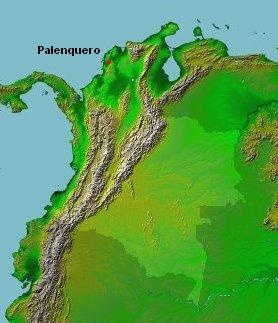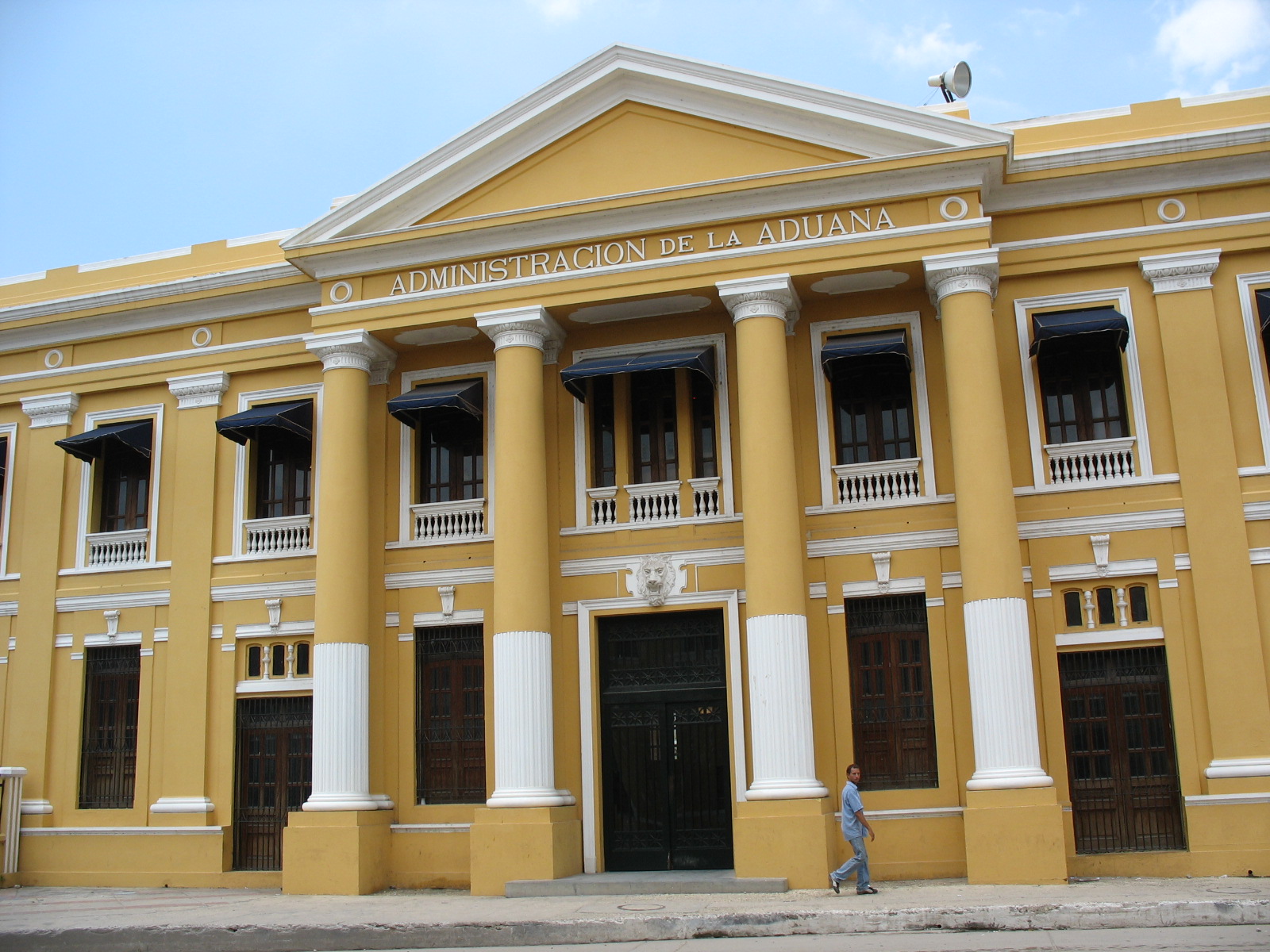|
San Andrés–Providencia Creole
San Andrés–Providencia creole is an English-based creole language spoken in the San Andrés and Providencia Departments of Colombia, Department of Colombia by the native Raizals, very similar to Belizean Creole, Belize Kriol and Miskito Coastal Creole. Its vocabulary originates in English, its lexifier, but San Andrés–Providencia creole has its own phonetics and many expressions from Spanish language, Spanish and African languages, particularly Kwa languages (especially Twi and Ewe language, Ewe) and Igboid languages, Igbo languages. The language is also known as "San Andrés Creole", "Bende" and "Islander Creole English". Characteristics # It marks the time. The auxiliar (~ben~men) marks a past simple. Future tense is marked with and . Progressive tense is marked by . # The auxiliars and before the sentence is a polite way to ask permission or asking something. # Other auxiliary words before the verb mark probability like , , , , and ; willingness with and ; and ... [...More Info...] [...Related Items...] OR: [Wikipedia] [Google] [Baidu] |
Colombia
Colombia (, ; ), officially the Republic of Colombia, is a country in South America with insular regions in North America—near Nicaragua's Caribbean coast—as well as in the Pacific Ocean. The Colombian mainland is bordered by the Caribbean Sea to the north, Venezuela to the east and northeast, Brazil to the southeast, Ecuador and Peru to the south and southwest, the Pacific Ocean to the west, and Panama to the northwest. Colombia is divided into 32 departments and the Capital District of Bogotá, the country's largest city. It covers an area of 1,141,748 square kilometers (440,831 sq mi), and has a population of 52 million. Colombia's cultural heritage—including language, religion, cuisine, and art—reflects its history as a Spanish colony, fusing cultural elements brought by immigration from Europe and the Middle East, with those brought by enslaved Africans, as well as with those of the various Amerindian civilizations that predate colonization. Spanish is th ... [...More Info...] [...Related Items...] OR: [Wikipedia] [Google] [Baidu] |
Igboid Languages
Igboid languages constitute a branch of the Volta–Niger language family. The subgroups are: * Ekpeye * Nuclear Igboid: Igbo, Ikwerre, Ika, Ngwa, Izii–Ikwo–Ezza– Mgbo, Ogba and Ukwuani-Aboh-Ndoni Williamson and Blench conclude that the Nuclear Igboid languages (Igboid apart from Ekpeye) form a "language cluster" and that they are somewhat mutually intelligible In linguistics, mutual intelligibility is a relationship between languages or dialects in which speakers of different but related varieties can readily understand each other without prior familiarity or special effort. It is sometimes used as an .... However, mutual intelligibility is only marginal, even among the Izii–Ikwo–Ezaa–Mgbo languages. Igboid speakers are about 60 million people. http://www.sil.org/iso639-3/cr_files/2012-078.pdf Names and locations Below is a list of language names, populations, and locations from Blench (2019). See also * List of Proto-Igboid reconstructions (Wiktionar ... [...More Info...] [...Related Items...] OR: [Wikipedia] [Google] [Baidu] |
Languages Of Colombia
More than 99.5% of Colombians speak the Spanish language; also 65 Amerindian languages, 2 Creole languages, the Portuguese language and the Romani language are spoken in the country. English has official status in the San Andrés, Providencia and Santa Catalina Islands. The overwhelming majority of Colombians speak Spanish (see also Colombian Spanish), but in total 101 languages are listed for Colombia in the Ethnologue database. The specific number of spoken languages varies slightly since some authors consider as different languages what others consider to be varieties or dialects of the same language. Best estimates recorded 71 languages that are spoken in-country today—most of which belong to the Chibchan, Tucanoan, Bora–Witoto, Guajiboan, Arawakan, Cariban, Barbacoan, and Saliban language families. There are currently about 850,000 speakers of native languages. Sixty-five indigenous languages that exist today can be regrouped into 12 language families and 10 language ... [...More Info...] [...Related Items...] OR: [Wikipedia] [Google] [Baidu] |
Jamaican Patois
Jamaican Patois (; locally rendered Patwah and called Jamaican Creole by linguists) is an English-based creole language with West African influences, spoken primarily in Jamaica and among the Jamaican diaspora. A majority of the non-English words in Patois come from the West African Akan language. It is spoken by the majority of Jamaicans as a native language. Patois developed in the 17th century when enslaved people from West and Central Africa were exposed to, learned, and nativized the vernacular and dialectal forms of English spoken by the slaveholders: British English, Scots, and Hiberno-English. Jamaican Creole exhibits a gradation between more conservative creole forms that are not significantly mutually intelligible with English, and forms virtually identical to Standard English. Jamaicans refer to their language as ''Patois'', a term also used as a lower-case noun as a catch-all description of pidgins, creoles, dialects, and vernaculars worldwide. Creoles, includi ... [...More Info...] [...Related Items...] OR: [Wikipedia] [Google] [Baidu] |
Spanish-based Creole Languages
A Spanish creole, or Spanish-based creole language, is a creole language (contact language with native speakers) for which Spanish serves as its substantial ''lexifier''. A number of creole languages are influenced to varying degrees by the Spanish language, including the Philippine creole varieties known as Chavacano, Palenquero, and Bozal Spanish. Spanish also influenced other creole languages like Papiamento, Pichinglis, and Annobonese. Any number of Spanish-based pidgins have arisen due to contact between Spanish and other languages, especially in America, such as the used by the Panare people of Venezuela and Roquetas Pidgin Spanish used by agricultural workers in Spain. However, few Spanish pidgins ever creolized. Spanish creole languages Chavacano Chavacano (also Chabacano) is a group of Spanish-based creole language varieties spoken in the Philippines that emerged during the 18th century following the colonization of the Spaniards in the Philippines. While Chava ... [...More Info...] [...Related Items...] OR: [Wikipedia] [Google] [Baidu] |
Bogotá
Bogotá (, also , , ), officially Bogotá, Distrito Capital, abbreviated Bogotá, D.C., and formerly known as Santa Fe de Bogotá (; ) during the Spanish period and between 1991 and 2000, is the capital city of Colombia, and one of the largest cities in the world. The city is administered as the Capital District, as well as the capital of, though not part of, the surrounding department of Cundinamarca. Bogotá is a territorial entity of the first order, with the same administrative status as the departments of Colombia. It is the political, economic, administrative, and industrial center of the country. Bogotá was founded as the capital of the New Kingdom of Granada on 6 August 1538 by Spanish conquistador Gonzalo Jiménez de Quesada after a harsh expedition into the Andes conquering the Muisca, the indigenous inhabitants of the Altiplano. Santafé (its name after 1540) became the seat of the government of the Spanish Royal Audiencia of the New Kingdom of Granada (cre ... [...More Info...] [...Related Items...] OR: [Wikipedia] [Google] [Baidu] |
Cartagena De Indias
Cartagena ( , also ), known since the colonial era as Cartagena de Indias (), is a city and one of the major ports on the northern coast of Colombia in the Caribbean Coast Region, bordering the Caribbean sea. Cartagena's past role as a link in the route to West Indies provides it with important historical value for world exploration and preservation of heritage from the great commercial maritime routes. As a former Spanish colony, it was a key port for the export of Bolivian silver to Spain and for the import of enslaved Africans under the asiento system. It was defensible against pirate attacks in the Caribbean. The city's strategic location between the Magdalena and Sinú Rivers also gave it easy access to the interior of New Granada and made it a main port for trade between Spain and its overseas empire, establishing its importance by the early 1540s. Modern Cartagena is the capital of the Bolívar Department, and had a population of 1,028,736, according to the 2018 cen ... [...More Info...] [...Related Items...] OR: [Wikipedia] [Google] [Baidu] |
Barranquilla
Barranquilla () is the capital district of Atlántico Department in Colombia. It is located near the Caribbean Sea and is the largest city and third port in the Caribbean Coast region; as of 2018 it had a population of 1,206,319, making it Colombia's fourth-most populous city after Bogotá, Medellín, and Cali. Barranquilla lies strategically next to the delta of the Magdalena River, (originally before rapid urban growth) from its mouth at the Caribbean Sea, serving as a port for river and maritime transportation within Colombia. It is also the main economic center of Atlántico department in Colombia. The city is the core of the Metropolitan Area of Barranquilla, with a population of over 2 million, which also includes the municipalities of Soledad, Galapa, Malambo, and Puerto Colombia. Barranquilla was legally established as a town on April 7, 1813, although it dates from at least 1629. It grew into an important port, serving as a haven for immigrants from Europe, espe ... [...More Info...] [...Related Items...] OR: [Wikipedia] [Google] [Baidu] |
British English
British English (BrE, en-GB, or BE) is, according to Lexico, Oxford Dictionaries, "English language, English as used in Great Britain, as distinct from that used elsewhere". More narrowly, it can refer specifically to the English language in England, or, more broadly, to the collective dialects of English throughout the British Isles taken as a single umbrella variety, for instance additionally incorporating Scottish English, Welsh English, and Ulster English, Northern Irish English. Tom McArthur (linguist), Tom McArthur in the ''Oxford Guide to World English'' acknowledges that British English shares "all the ambiguities and tensions [with] the word 'British people, British' and as a result can be used and interpreted in two ways, more broadly or more narrowly, within a range of blurring and ambiguity". Variations exist in formal (both written and spoken) English in the United Kingdom. For example, the adjective ''wee'' is almost exclusively used in parts of Scotland, North E ... [...More Info...] [...Related Items...] OR: [Wikipedia] [Google] [Baidu] |
Colombian Constitution Of 1991
The Political Constitution of Colombia of 1991 ( es, Constitución Política de Colombia de 1991), is the Constitution of the Republic of Colombia. It was promulgated in Constitutional Gazette number 114 on Thursday, July 4, 1991, and is also known as the Constitution of Human Rights. It replaced the Political Constitution of 1886 and was issued during the presidency of the liberal César Gaviria, with ideas from the also liberal Luis Carlos Galán. History In the late 1980s, Colombia was facing a period of unprecedented violence. Although political violence had been commonplace in the country's history since the 19th century, and Colombia had been embroiled in an armed conflict primarily against guerrilla groups since the 1960s, in the 1980s the list of actors involved in the armed conflict became increasingly complex and the violence took on new forms. The conflict now involved new guerrilla movements, paramilitary groups and violent drug cartels (most famously the Me ... [...More Info...] [...Related Items...] OR: [Wikipedia] [Google] [Baidu] |
SIL International
SIL International (formerly known as the Summer Institute of Linguistics) is an evangelical Christian non-profit organization whose main purpose is to study, develop and document languages, especially those that are lesser-known, in order to expand linguistic knowledge, promote literacy, translate the Christian Bible into local languages, and aid minority language development. Based on its language documentation work, SIL publishes a database, ''Ethnologue'', of its research into the world's languages, and develops and publishes software programs for language documentation, such as FieldWorks Language Explorer (FLEx) and Lexique Pro. Its main offices in the United States are located at the International Linguistics Center in Dallas, Texas. History William Cameron Townsend, a Presbyterian minister, founded the organization in 1934, after undertaking a Christian mission with the Disciples of Christ among the Kaqchikel Maya people in Guatemala in the early 1930s.George Thomas ... [...More Info...] [...Related Items...] OR: [Wikipedia] [Google] [Baidu] |


